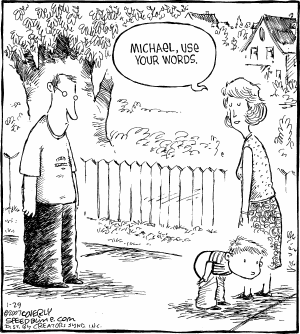top of page

Sensory Processing Disorder
COMMUNICATION CHALLENGES
As SPD can affect all aspects of life, the student with this disorder may have communication challenges as well. Some examples include:
- poor tactile awareness in the lips, tongue or jaw, making clear speech difficult
- sensory based motor problems that could affect speech (Kranowitz, 1998)
- difficulty understanding verbal instruction
- inability to tune out backgroud noise
- difficulty making eye contact, showing active listening (BC Teachers Federation)
- difficulty verbalizing reason for frustration
Strategies for overcoming these difficulties will depend on the student. In some cases it may be necessary to use less verbal instruction. Use visuals, touch and movement prompts instead. Again, for an inability to tune out distracting or loud noice, use headphones, or allow the student to move to a quiet place to work. For students who find eye contact difficult, have them use other cues to show they are listening and test comprehension (BC Teacher's Federation). For the student who has difficulty expressing the reason for frustration, and is communicating this frustration in negative ways, encourage him/her to use words.
Figure 12: Communication Challenges. Retrieved from:https://lisamarierobinson.files.wordpress.com/2011/05/64.gif

bottom of page